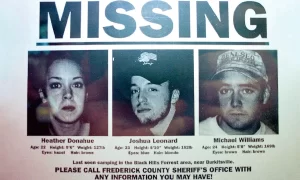In the ever-evolving prospect of 21st century horror, where cutting-edge technology and innovative storytelling techniques are more advanced than ever before, it is the seemingly humble sub-genre of found footage horror that continues to evoke primal fear in a way that big-budget productions often fall short of achieving. The breakthrough of this spine-chilling sub-genre can be traced back to the groundbreaking release of “The Blair Witch Project” (1999), a film that left an irreplaceable terror on its audiences. Directors Eduardo Sánchez and Daniel Myrick expertly crafted a narrative method that confused and disorientated their audience, blurring the lines between fiction and reality to a degree that lingers long after the credits roll. As the cinematic world continues to be haunted by the mysterious presence of the Blair Witch, found footage horror stands as proof of the exceptional power of storytelling that leaves audiences questioning the accuracy of what they’ve just witnessed, forever changed by the unsettling notion that the terror they experience might have been someone’s genuine, harrowing end.
Before we discuss the spectacle that is “The Blair Witch Project”, we must first discuss the origins of this sub-genre. The first (and most disturbing) film which uses this narrative, albeit sporadically, is Ruggero Deodato’s 1980s creation “Cannibal Holocaust”, known as cinemas most controversial horror. This film gained notoriety for its controversial violence and authentic portrayal of animal cruelty, including human deaths so realistic that, within a mere ten days after the release, Deodato found himself charged with murder. Despite its shocking content, “Cannibal Holocaust” did not spark the found footage trend, finding its audience primarily among aficionados of extremist cinema and facing bans in over 50 countries.
Nineteen years after Cannibal Holocaust, found footage was truly born with the captivating and terrifying release of “The Blair Witch Project”. No horror prior to this release has ever left such a lasting impact on the horror genre. The narrative follows three student film makers on a documentary journey through the Maryland Backwoods, exploring the myth of the Blair Witch who haunts these woods. The film weaves the tale that the film makers are being stalked and followed by this unknown entity, leaving an indelible mark of terror on its audience, leaving them with a lasting impression of impending doom. The intense marketing campaign that came hand in hand with the release was one of the best and biggest stunts ever pulled in movie history. Drawing audiences into the gimmick that the film they dedicated 81 minutes to watching was factual and accurate, extending the narrative through a website with police reports, crime scene evidence and missing persons posters, intensifying the fear of the unknown. The film makers Sánchez and Myrick were genius with this campaign and knew how to captivate an audience beyond the screen, creating their own true crime spectacle, and delved into the primal fear us humans have in our day to day lives, the fear of the unknown.
Since the release of “The Blair Witch Project” the demand for found footage films skyrocketed, and thus created what is now known as the found footage sub-genre of horror. With subsequent films such as, “Paranormal Activity” (2007), “Lake Mungo” (2008), “Host” (2020), “Willow Creek” (2013), and “Unfriended” (2014) entered the scene, none matched the impact of “The Blair Witch Project”.
Considering the worldwide success of “The Blair Witch Project”, it is genuinely incredible that film makers Myrick and Sánchez were able to pull this stunt off with a shoestring budget of only $25,000. The films ginormous profitability, earning almost 10,000 times its budget, marked it as the sixth highest grossing independent film and is known to be the most successful film of all time in terms of profit. Sánchez and Myrick made film history with the Blair witch and together carry the legacy as the first successful venture to the use of internet marketing, online speculation and virility. “The Blair itch Project” truly is one of the most successful marketing campaigns in our history and the godfather of successful found footage style filming.
Following this success, low budget horror experienced a resurgence. Eight years after “The Blair Witch Project”, “Paranormal Activity” broke box office records, gaining a profit of over 193 million dollars, 791 times what it cost to create, making it the most profitable horror film in history. “The Blair Witch Project” and “Paranormal Activity” are considered two of the best investments ever made in Hollywood history, and they have many things in common, low budget, never before seen actors, and, of course, found footage. These unexpected successes redefined low budget films, giving them a newfound respectability and potential.
The appeal of found footage horror is evident in its ability to create a visceral and immersive style for the audience. The shaky camera work and amateurish filming style enhance realism and immersion, making viewers feel like active participants in the unfolding events. The first-person perspective engages the audience uniquely, providing a sense of witnessing events firsthand. The sub-genre’s appeal lies in its ability to leverage realism, suspense, and relatability, evoking fear and unease in a way that resonates profoundly with horror enthusiasts.
In this ever evolving landscape of horror, found footage films have carved a niche by capitalizing on realism, suspense, and fear of the unknown. From the groundbreaking success of “The Blair Witch Project” to subsequent hits like “Paranormal Activity”, the sub-genre has not only terrified its audiences but also redefined the possibilities of low-budget film making. This unique storytelling approach, coupled with clever marketing strategies, has propelled found footage horror into cinematic history. As audiences continue to crave the adrenaline rush of uncertainty and immersive fear, it’s clear that the undying appeal of found footage horror remains firmly embedded in the fabric of the genre.
